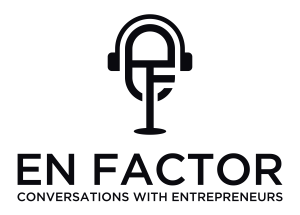“If you have never failed you have never done anything.”
Betty White (my mom)
A few years ago, one of my graduate students angrily walked out of class and dropped out of the entire graduate program during a lively class discussion on the role of failure in entrepreneurship. While I wasn’t able to confirm that it was that experience that led to his withdrawal, based on his remarks during the conversation, I was fairly certain it played a pivotal role in his decision. This experience left me feeling that I had somehow failed in my attempts to better prepare my students for the rough and tumble world of entrepreneurship where failure is so often a part of the pathway to success. This experience left a strong impression on me and ultimately influenced me to start researching resilience among college aged students. This in turn was a big influence in the Enfactor Podcast, where I ask almost every guest about their experiences with failure and challenge and I seek out their strategies for remaining resilient.
Those of us who are familiar with entrepreneurship – either because we have lived it or studied it – know that entrepreneurship is a verb. Entrepreneurs are successful because they take action. We also know that every entrepreneurial experience is an experiment. We are making and testing assumptions along the way to some desired outcome. And the path to something we can define as a successful outcome is quite frequently littered with failure. That is, with outcomes that don’t match our expectations, our hypotheses. At the same time, we know that for entrepreneurs, failure is not an option. Entrepreneurs persevere. So, how do we reconcile that paradox and how do we teach this to our students?
The answer, I have learned, lies in the combination of two concepts: equifinality and resilience. The first, equifinality, is a concept I learned during my PhD days and it has always been a favorite word for me. Equifinality is used a bit differently in the psychology literature but in management theory it simply refers to the belief that there are many paths to the same end, e.g. multiple ways to reach a final goal. In fact, a fatal flaw among many founders is an assumption that the solution they have created to address a problem in the marketplace is the most effective or efficient or is even desired by the marketplace. The second, resilience, the capacity to recover quickly from difficulties, is required of a founder when they learn through trial and error that what they thought was true is not. This is the essence of the entrepreneurial theory of “fail early and fail fast”. The less invested the easier to pivot or adapt. Thus, failure may come along the way, but the final outcome can still be success. Reframing failure reminds us that we have options and we can change the way we think about this concept and that each failure is a learning process. While maybe not welcome at the time, it can lead to ever greater success than imagined.
So, how do we teach these concepts to our students? The first level of learning is knowledge. We can talk with students about Traf-o-Data, Bill Gates’ failed startup that was instrumental in teaching him important lessons needed to start Microsoft or Colonel Sanders, whose recipe was reportedly rejected by 1,000 restaurants before he started his own line of restaurants and Sir James Dyson who created more than 5,000 prototype flops on the way to the development of his extremely successful Dyson vacuum. We can invite entrepreneurs into our classrooms to share their own stories of equifinality and resilience. We can help them understand ways to build a strong network of like-minded people who can provide support for them when the inevitable failures occur and we can invite them to reflect on their own experiences of overcoming challenges and failures.
This is a start. But it is one thing to know something and another to live it. How can we provide our students a context that offers the second level of learning – the application of resilience? How do we provide an opportunity for our students to experience challenge and build their resiliency muscle? One of my long-time mentors in this field, Dr. Donald F. Kuratko, Indiana University, found a way for some of his students. He created an award-winning entrepreneurship education program after his father told him that a person can’t learn entrepreneurship until they feel their “spine sweat.” Don went on to create a two-semester pass-fail competition, judged by entrepreneurs, where students who did not pass had to repeat their entire senior year. That’s a tough call to your mom and dad – letting them know about this only days before they had planned to watch you walk across the stage and get your diploma.
Interestingly, the world is providing us with an opportunity to help our students build their resiliency muscle as I write this. Our students, like the rest of us, are struggling with the uncertainty of the Covid-19 pandemic. It requires courage and bravery to remain resilient during this time. Here is an assignment idea. Talk to them about the concepts of equifinality and resilience and the role of failure in success. Share stories and encourage them to talk about how they can develop a strong network of likeminded people to help them along the way. Invite your students to listen to several of the Enfactor Podcasts – almost all of them have great stories of resilience – and then write a reflection paper on how they are practicing resilience during this experience. As entrepreneurship educators, we look for opportunity in every context. Let’s all find a way to use this challenging time to make the world a better place.




